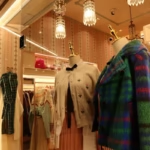Clothing trends and body shapes have always influenced fashion conversations but one term that has gained notable attention over the years is camel toe. This expression describes the visibility of the female anatomy through tight-fitting garments, most often leggings, swimsuits or workout attire. While some individuals view it as an accidental wardrobe mishap, others consider it a style statement or even an empowering choice. Because of its presence in fashion, fitness and social culture, camel toe has become a topic of curiosity, debate and sometimes humor.
This article explores the phenomenon from a balanced perspective by examining its causes, common misconceptions, cultural influences, prevention tips and the way it is discussed in different communities. Whether someone seeks to avoid it or embrace it, understanding camel toe provides valuable insight into how clothing interacts with the body and how society responds to such visibility.
What Is Camel Toe and Why Does It Happen ?
Camel toe refers to the outline of the female genital area becoming visible when snug clothing rests tightly between the labia. It occurs most often in garments that use thin, stretchy fabrics or in situations where the cut of clothing is narrow in the crotch region. This effect is not exclusive to one type of apparel; leggings, yoga pants, swimwear, tights, and even denim can create this outcome depending on the fit.
The primary reason camel toe occurs is friction between fabric and body shape. Certain materials, such as spandex, nylon, or polyester, cling more closely than cotton or thicker blends. Additionally, body proportions, posture, and movement patterns play a role. For example, during athletic activities such as running or stretching, garments shift, making camel toe more noticeable.
Understanding this effect is not about attaching shame or glamour but recognizing the interplay between fashion design and anatomy. Some people treat it as a natural consequence of modern clothing styles, while others actively work to conceal or emphasize it.
Clothing Materials and Styles Linked to Camel Toe
Different fabrics and design features make camel toe more or less likely to occur. Thin and flexible materials tend to cling, while heavier or structured fabrics provide coverage. Below is a comparison table showing how specific clothing elements influence the outcome.
Fabric and Style Influence on Camel Toe
| Clothing Material | Likelihood of Camel Toe | Notes |
| Spandex/Nylon | High | Common in gym wear and swimwear due to stretch and tight fit |
| Polyester blends | Moderate | Offers stretch but sometimes thicker weave reduces visibility |
| Cotton | Low | Absorbs moisture and provides a looser fit |
| Denim | Low to Moderate | Depends on tightness; skinny jeans increase the chance |
| Silk | Moderate | Smooth texture, drapes differently but may cling when fitted |
From a design perspective, seams, gussets, and panel placements matter. Clothing cut with a central seam running through the crotch area increases chances of visibility, while garments with reinforced or double-layered panels reduce it. Recognizing these distinctions helps individuals make informed clothing choices, whether for style, comfort, or modesty.
Why Some People Feel Concerned About Camel Toe
Public opinion about camel toe varies. Some view it as an embarrassing fashion mishap, especially when appearing in professional or public settings. In such cases, individuals may feel uncomfortable or self-conscious, fearing unwanted attention. This is often due to cultural associations that link visibility of the body with modesty, propriety, or sexuality.
Media portrayals have also amplified the conversation. Celebrity photographs highlighting camel toe have circulated in tabloids, sparking debates over fashion choices and body exposure. In fitness communities, where leggings and sportswear dominate, discussions focus on whether it should be hidden, normalized, or celebrated.
The concern often comes down to context. At the gym or while running errands, people may dismiss it as a natural side effect of clothing, while in a workplace or formal event, the same visibility might feel inappropriate. This perception reflects social norms rather than inherent issues with the phenomenon itself.
Techniques People Use to Avoid Camel Toe
For individuals who prefer to minimize camel toe, several strategies exist. These approaches range from choosing the right fabrics to adjusting undergarments. Practical solutions include:
- Wearing thicker leggings or pants with double-layered crotch areas
- Selecting seamless or padded underwear to create a smoother surface
- Opting for darker shades and patterned fabrics that distract from contours
- Ensuring the correct clothing size, as smaller sizes increase tightness
- Using specially designed inserts marketed as camel toe guards
Personal comfort is central to these decisions. While fashion brands increasingly design clothing with preventative features, individuals can also apply at-home adjustments. The goal is not to suggest one must hide camel toe, but to provide tools for those who prefer discretion.
Why Some Choose to Embrace Camel Toe
In contrast, some individuals intentionally highlight camel toe as a form of self-expression. Fashion history includes numerous examples where body outlines were celebrated, from corsets that accentuated waists to modern athleisure that emphasizes curves. For some, camel toe represents confidence, body acceptance, or even sensuality.
This perspective challenges the idea that it should be considered embarrassing. Supporters argue that bodies are natural and visibility is not inherently inappropriate. On social platforms, discussions and trends sometimes normalize camel toe as part of fitness aesthetics or casual fashion.
The decision to embrace it is personal and varies by culture, age, and individual preference. For example, some athletes or dancers find it unavoidable due to functional clothing, and rather than fight it, they accept it as part of performance wear.
Cultural Views on Camel Toe
Perceptions of camel toe differ across societies. In some cultures, modest dressing codes mean visibility of any intimate outline is strongly discouraged. In others, fashion is more liberal, making the phenomenon less controversial. Pop culture has influenced this through television, film, and social media discussions, shaping public attitudes.
Interestingly, some regions associate camel toe with fashion mishaps, while others interpret it as playful or daring. Marketing also reflects these divides. While certain clothing brands design products specifically to prevent it, others capitalize on bold designs that accentuate body contours.
This cultural duality highlights the broader conversation about body acceptance. As fashion evolves and boundaries shift, camel toe remains a subject where social standards, personal comfort, and style intersect.
Global Perceptions of Camel Toe
| Region | General Perception | Cultural Influence |
| North America | Mixed views | Fitness culture normalizes, but media often ridicules |
| Europe | Liberal to neutral | Fashion-forward cities less critical |
| Middle East | Discouraged | Modesty traditions shape dress codes |
| Asia | Context-specific | Urban centers more accepting than traditional areas |
| Australia | Casual acceptance | Activewear lifestyle contributes to normalization |
Practical Fashion Tips for Comfort and Confidence
Whether someone chooses to minimize or embrace camel toe, clothing strategies can help ensure comfort. Athleisure and sportswear brands now focus heavily on functionality, offering features such as moisture-wicking fabrics, gusseted crotch designs, and reinforced panels. When selecting outfits, considering movement and activity is just as important as appearance.
Practical fashion tips include:
- Testing clothing fit in movement, not just while standing
- Rotating different fabrics to see what feels best
- Layering with longer tops for coverage when desired
- Exploring undergarments designed for activewear compatibility
Confidence often grows from preparation. Knowing how clothing behaves allows individuals to enjoy activities without distraction, whether in the gym, at work, or in casual settings.
The Role of Fashion Industry in Addressing Camel Toe
The fashion industry plays a significant role in shaping how camel toe is viewed. Brands that specialize in leggings and sportswear often face consumer feedback about this issue. As a result, many now integrate preventative measures directly into design. Some even market anti-camel toe technology as a selling feature, highlighting innovation in material science and apparel engineering.
This shift shows how consumer demand influences design evolution. What was once considered an awkward side effect has now become part of the conversation that drives new products. By listening to feedback, brands balance aesthetics, comfort, and performance.
At the same time, niche fashion markets embrace camel toe as part of styling, reinforcing that not all consumers seek concealment. This dual approach reflects the diversity of preferences in the global market.
Fashion Solutions and Innovations
| Fashion Solution | Description | Consumer Benefit |
| Gusseted Crotch | Diamond-shaped panel sewn into garment | Reduces pressure and increases comfort |
| Double-Layered Fabric | Extra lining in crotch area | Prevents outline visibility |
| Padded Underwear | Inserts or thicker fabric in underwear | Smooths surface and adds coverage |
| Seamless Technology | Clothing without central seams | Decreases chances of fabric separating |
| Anti-Camel Toe Guards | Specialized inserts | Provides complete coverage for discretion |
Psychological and Social Aspects
Beyond fabric and fashion, camel toe connects with psychology and social interaction. For some, the possibility of visibility causes stress or insecurity, while others feel empowered by body confidence. These responses depend on upbringing, body image perceptions, and peer influence.
Social commentary often amplifies the topic through humor, fashion criticism, or trend discussions. The digital era adds another layer, as images are shared rapidly online, sometimes without consent. This raises conversations about body autonomy and respect. Understanding these dynamics encourages empathy and supports a healthier approach to discussing body-related topics in public spaces.
Conclusion
Camel toe is more than a simple fashion occurrence it reflects a complex interaction between clothing design, cultural values and personal preference. For some, it is a source of self-consciousness, while for others it represents confidence and body acceptance. The fashion industry continues to innovate with solutions, while cultural conversations evolve alongside shifting norms.
By approaching camel toe with understanding rather than judgment, individuals can make informed choices about how they dress and express themselves. Whether choosing to conceal or highlight it the key lies in personal comfort, respect for others and awareness of social contexts.
Frequently Asked Questions
What causes camel toe the most?
It typically occurs when tight fabrics such as spandex or nylon cling too closely and separate at the crotch seam.
Can camel to’e be prevented?
Yes, by wearing thicker fabrics, seamless clothing, or specialized undergarments, camel to’e can often be minimized.
Is camel to’e considered inappropriate?
It depends on cultural norms and context. Some view it as a wardrobe mishap, while others consider it natural or even stylish.
Why do some people embrace camel to’e?
For certain individuals, it symbolizes confidence, body acceptance, or fashion boldness.
Do clothing brands address camel to’e in design?
Yes, many activewear brands now use gussets, double layers, or anti-camel to’e technology to meet consumer needs.







